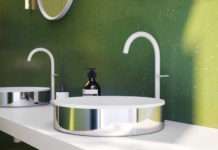What Does The Term Microbiology Mean?
Microbiology is the analysis of tiny living organisms, for example, fungi, algae, bacteria, protozoa, and viruses. Microbes constitute for up to sixty percent of all living substance on the planet and can’t be seen with the naked eye. They can damage or pollute a product and result in skin irritation or infection.
Generally, it is not necessary for cosmetics to be sterile, but their protective composition must be able to withstand toxic microbial contamination. Cosmetics and toiletries are continuously challenged and at risk of contamination when consumers are using them with hands that are not clean. That’s why it is essential for manufacturers of personal care and cosmetic products to ensure that these products do not contain any pathogenic microorganisms and are safe for use.

What Are The Types Of Microbes That Can Potentially Affect Cosmetics?
- Candida albicans (Fungus yeast)
- Aspergillus brasiliensis (Fungus mold)
- Pseudomonas aeruginosa (Bacteria)
- Escherichia coli (Bacteria)
- Staphylococcus aureus (Bacteria)
When Should Testing For Microbes Be Done On Cosmetics And Why?
It is necessary for Microbiological testing to be done when the product has water content, and it necessitates the use of a preservative. When an unsuitable preservative or an inadequate amount is used in the formulation, it can result in the presence of microorganisms be found in the products. Microorganisms found in cosmetics can potentially result in spoilage or a chemical change in the product, which can be harmful to consumers or the cosmetic product.
Under Which Conditions Is It Possible For Microbes To Start Growing?
- Moist and warm environments
- Conditions which are non-sterile
- Where water is present

What Precautionary Steps Can Be Taken To Minimize The Risk Of Contamination During The Manufacturing Phase?
Most cosmetic or personal care products have a water and nutrient content. Exactly what these microbes thrive on, but with these helpful tips, it is possible to reduce the possibility of contamination during the manufacturing stage.
- Make sure your work surface is disinfected.
- Always wash your hands before you start.
- Make use of clean beakers and utensils when the product is prepared.
- Always wear gloves.
- Avoid using tap water as it can encompass traces of bacteria. Rather opt for distilled water.
- Avoid the risk of cross-contamination and stick to one formulation at a time.
- Always abide by the formulation guidelines, and the ingredients must be heated according to the formulation.
- Do not touch the finished products with your bare hands.
- Once the products are ready for packaging, make sure you use disposable piping bags for dispensing the product.
Testing for microbes in toiletries and cosmetics is a crucial step of ensuring the safety of your products as well as quality control.
A range of microbiological tests is conducted to help measure the efficacy and safety of components, raw materials, ingredients, and the final product.
The testing itself (to detect microbial contamination) entails:
- Challenge testing
- Identification of pathogens
- Identification of mold and yeast
- Overall plate count












